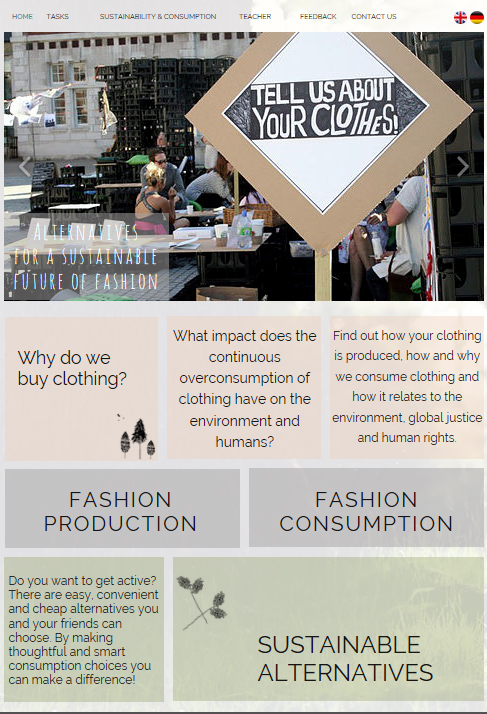social marketing toolbox
How to best influence consumers? A social marketing toolbox has been developed targeting 16-18 years in school, including a WebQuest, a workshop based on online and offline elements. When dealing with attitude behavior gap social marketing approach has shown to be effective, in contrast to information-based campaigns. Via social marketing activities consumers can partake in creating awareness around sustainable consumption.
 A webQuest has been developed and tested in schools with the intention to raise awareness for the topic of textile recycling and provide alternative behavioral strategies to binning clothes. The researchers used knowledge gained from a survey on young consumers fashion behavior when designing the workshop. Consumers are ready to consumer fashion in a more sustainable manner, but perceive barriers in its availability, accessibility and affordability. In addition, in a cross-country comparison similar patterns and entry points to induce a behavioral change were found, when it comes to promote sustainable fashion consumption.
A webQuest has been developed and tested in schools with the intention to raise awareness for the topic of textile recycling and provide alternative behavioral strategies to binning clothes. The researchers used knowledge gained from a survey on young consumers fashion behavior when designing the workshop. Consumers are ready to consumer fashion in a more sustainable manner, but perceive barriers in its availability, accessibility and affordability. In addition, in a cross-country comparison similar patterns and entry points to induce a behavioral change were found, when it comes to promote sustainable fashion consumption.
Studies of the relationship of style and sustainable fashion also revealed a new angle: style as one option to increase sustainable fashion consumption – it still has all positive features of fashion, but generally reduces overall consumption and this is more sustainable. The relationship between style and wellbeing provides another entry point: instead of threatening consumers with guilt associated with unsustainable behavior, the link between well-being and sustainable consumption could create a more positive and better received argument.
The toolbox comprises a homepage with videos and information as well as specific tasks. To make itself sustaining, it includes a teacher’s instruction to promote the tool to be carried out independently. The toolbox have been tried out in schools in several countries.




